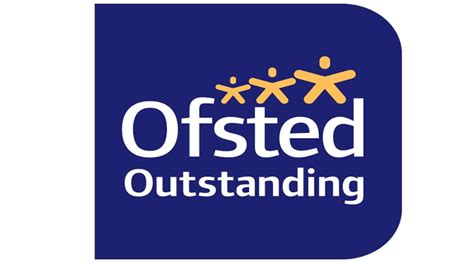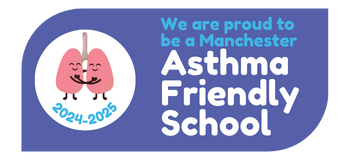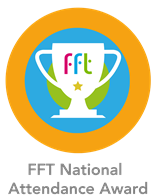English
So Matilda’s strong young mind continued to grow, nurtured by the voices of all those authors who had sent their books out into the world like ships on the sea. Roald Dahl, Matilda
Phonics and Reading
Reading is the key to the entire curriculum. Our aim at Old Moat is to develop skilled readers with a love of reading. We seek to develop readers who can decode and understand a wide range of texts written for different purposes and think critically about what they are reading. At Old Moat we not only teach the fundamental skills of reading but also nurture children’s reading attitudes and behaviour with the aim that all children have a love of reading that will feed their development in every area of life. Our curriculum is carefully designed for the children we serve to address vocabulary gaps and help them to understand new words in context. Where children are not reading and understanding at an appropriate level, we provide different levels of intervention: we want all our pupils to become young people who can navigate the rest of the education system successfully and understand the world around them. We are a Read Manchester School Champion and part of Read for Good’s Readathon Focus Group because we like to share good practice in spreading the love of reading.
We use Little Wandle to teach phonics and early reading. From Nursery through to the end of Year 1, children have daily phonics lessons and read the corresponding books from the scheme. They have three reads per week, focusing on decoding (using phonics to read the words out loud), expression and comprehension. They then take their book home to show off their reading skills to the family. The Little Wandle Rapid Catch-Up programme is used for readers higher up the school who need that support to get them reading fluently. We hold parent workshops so that parents understand how reading is taught at school and how they can support at home.
Reading takes many guises at Old Moat: children are read to by teachers and we have a "reading spine" of exciting books by diverse authors that the teachers read from; classes enjoy shared reading during English lessons; guided reading takes place in larger or smaller groups according to need and children read individually in school and at home.
In addition to the Little Wandle Catch-Up programme, for some children, we use the BR@P (Better Reading at Primary) intervention as a catch-up programme for children who have fallen behind in their reading. We offer intensive one-to-one support to children identified for the programme, and the programme is specifically tailored to each individual child. We use well-researched methods to find the precise level of text needed for the child to be able to read successfully, then to find the level of text needed for the child to be in the "learning zone" - learning new skills and words, but not working at a level that is too hard. The children begin to view themselves as successful readers, and build on this to make accelerated progress. We also focus on specific fluency work for children who have mastered phonics but are not reading at age-related expectations.
“The best reading environment is one where there is an expectation of pleasure in reading, where there is an excitement in talking about books and enjoyment in being read to.” Reading Connects Handbook. 2008:5
Our school is awash with books of all shapes, sizes and descriptions: children have access to books from our Little Wandle phonics scheme, levelled readers, classroom libraries, our library and our reading sheds on the playgrounds. Our reading culture is strong and children love to seek out something special to read. We have regular reading assemblies to celebrate books, reading and readers.
Reading is a partnership and we value all the parental support children receive: it is very important that children read at home to an adult, and that they are sent into school with their reading book each day.
Writing
Our writing curriculum uses quality texts as anchors for units of writing. The children study books by diverse authors with one thing in common: their quality and appeal to the children. We have a writing cycle that helps the children build the skills they need to write for different purposes. Children first look at the text they are studying, thinking about RAFT (Reason, Audience, Features, Tone). Reading comprehensions forms part of the initial part of the cycle, with children interrogating the text to find out what it really means. We try to make our exploration of the text playful, with drama work and games. Work on grammatical features that relate to the text is then woven into the cycle. As far as possible, we try to integrate our teaching of punctuation and grammar into the writing cycle for a text type, but occasionally there will be stand-alone work on grammar. We then have an emphasis on shared writing. Planning of this writing is taught explicitly and teachers model how to write from a plan. Shared writing allows children to see their teachers as writers who "think aloud" and share their thought processes. The final part of the cycle involves the children writing independently. At all stages, children are encouraged to take responsibility for their writing, with peer-editing and individual editing forming an important element of their work.
We follow Little Wandle for spelling in Reception, Year 1 and Year 2. In KS2, our spelling scheme of work is built with metacognition in mind. We regularly return to previously taught spellings to allow opportunities for children to remember and practise what they have learnt. There is also in-built flexibility for teachers to focus on misspellings that occur commonly. We do not have weekly spelling tests: the spellings for a half term are sent home for children to learn at home but tests in school are low stakes and often collaborative, as evidence suggests that this approach is more successful in helping children to retain correct spellings over a longer time.
We use Nelson Font as our model for handwriting, and our scheme of work is informed by Nelson and by the National Handwriting Association. Children have regular handwriting lessons so that handwriting becomes fluent and the brain is able to engage fully in composition rather than the physical act of writing.
Downloads
Overview of Writing Curriculum Years 1 to 6





